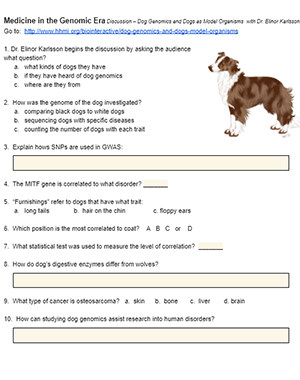
Genetics can be a tough subject for beginning biology students. Engage them with this activity on dog coat texture. Kids love dogs!
I made a simpler version of this as a phenomenon opener for my freshman students, but this year decided to do an advanced version with my AP Biology students. Both are based on the Biointeractive activity where scientists mapped the genome of dogs. The goal of the study was to find the location of the coat texture gene.
In this version, students are asked to watch the video where a scientist explains the research and how dog samples were obtained from volunteer dogs. This video guide has 10 questions to answer as students watch the video (10 minutes).
Mapping Curly Genes

Mapping Genes to Traits has an introduction with questions, a data table for analysis and finishes with a chi square analysis.
Next, students examine data that shows single nucleotide polymorphisms (SNPs) in dogs that have curly or straight hair. They count differences in dog types to determine which location is most strongly correlated.
For added fun, I ask students to bring or post photos of their own dogs and talk about the different coat types. They always want to know about color, but color is complicated. Many different genes are involved in the patterns of colors we see in dogs.
I find this exercise is best completed after students have learned about DNA and the central dogma. It’s a nice way to bridge Mendelian genetics, DNA, and statistical analysis.
Handouts:

